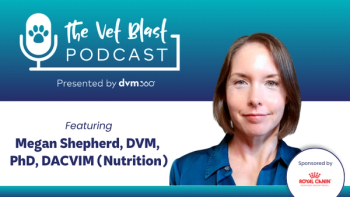
Starch management in dairy diets (Proceedings)
Providing properly balanced and successful dairy rations can be a challenging job. One must track a large number of nutrients and make sure that they present in adequate levels yet not in excess where they can lead to reduced performance or animal health.
Providing properly balanced and successful dairy rations can be a challenging job. One must track a large number of nutrients and make sure that they present in adequate levels yet not in excess where they can lead to reduced performance or animal health. Such nutrients include acid detergent and neutral detergent fiber, metabolizable protein, and macro- and micro-minerals to name a few. Starch definitely fits into this category. In the past, the primary concern about starch as diets were constructed was the potential for rumen acidosis due to excessive starch levels. In recent years starch has gained more scrutiny due to the ability to better measure starch degradability and Dr. Mike Allen's proposed hepatic oxidation theory (HOT) to explain dry matter intake regulation. This paper will briefly summarize the hepatic oxidation theory and explain how the concepts within the theory can be used to construct rations that do a better job of targeting specific groups of cows based on their ability to utilize starch and different starch degradabilities.
Many theories have been utilized to help explain dry matter intake regulation in dairy cows. Recently, Dr. Mike Allen at Michigan State University has proposed what he calls the "hepatic oxidation theory" or HOT for short. While somewhat complicated, the basics of HOT are fairly straightforward. The vagus nerve carries impulses from the liver to the feeding centers in the brain. The firing rate of the nerve can therefore control feeding behavior, with increased rates associated with hunger and intake stimulation. The firing rate of the vagus nerve is stimulated by the oxidation of "fuels" in the liver and the production or depletion of ATP. As fuels are oxidized and ATP is produced the firing rate of the vagus nerve decreases and satiety is stimulated. As ATP is depleted the firing rate of the vagus increases and the feeling of hunger and intake are stimulated. A number of fuels can be oxidized within the liver, including amino acids, fatty acids, lactate, and propionate. As we consider starch utilization, propionate obviously becomes a very important oxidative fuel.
If propionate is accepted as being a very important oxidative fuel and dietary starch is a major determinant for level of propionate production it therefore becomes very important for those constructing dairy diets to consider starch levels, sources, and degradabilities. Propionate is converted to glucose within the liver, but when it is delivered to the liver at levels that exceed it's rate to be converted to glucose the excess will be oxidized, potentially signaling satiety and decreasing intake. It becomes imperative then, that nutritionists consider the stage of lactation of a group of cows and the capacity of those cows, based on their stage of lactation, to utilize glucose.
So what does all this mean in the construction of rations for lactating dairy cows? For early lactation cows through mid-lactation intake is controlled to a greater degree by rumen fill than propionate production. Cows in this stage of lactation have very high demands for glucose due to the high level of milk production during this stage of lactation. Because of this, these cows tend to utilize propionate very quickly for the production of glucose and there is little propionate that is left to be oxidized and potentially stimulate satiety. Rations can therefore be constructed to provide greater fermentability, with higher overall starch levels and utilizing sources of starch with higher rumen digestibility. High moisture corn fits this situation very well as a starch source. As cows move past mid-lactation and milk production decreases, rumen fill becomes less of a determinant of intake and propionate production becomes more important. In these cows, it is desirable to have more consistent supply of nutrients to the liver so that more fuels are partitioned to milk rather than excessive body condition stores. To deliver lower levels of propionate at more consistent levels the nutritionist should consider starch sources with lower rumen fermentability but high digestibility within the small intestine. Such sources will provide glucose precursors but will limit propionate production. Dry, ground corn fits this role very nicely. While debated, HOT would recommend that cows that have just freshened should receive a diet with low levels of highly fermentable starch because of the concern of producing enough propionate to depress intake. Again ground, dry corn would fit this role nicely as it has just moderate rumen fermentabilty but high small intestine digestibility.
The realization that cows handle starch differently at different stages of lactation underscores the advantages of creating rations for cows based on stage of lactation. An early lactation group diet could have both higher levels of starch and starch sources, such as high moisture corn, that have higher rumen fermentability. A later lactation diet would consider starch sources that both supported milk production and limited body condition gain, which becomes extremely important as we look to maximize transition cow health. Dry, ground corn would such a source. While many farms may avoid making separate diets due to labor concerns or the number of cows that fit into a group, HOT does point to advantages in feeding groups of cows differently and thereby better targeting nutrients to the needs of cows. Utilizing grouping strategies can also allow for the targeted use of feed additives that produce higher levels of milk or better animal health. Dairy veterinarians can utilize their understanding of physiology to help coach their clients through these feeding and grouping decisions, and if they wish, develop the diets for their clients.
References
Allen, M.S. and B.J. Bradford. 2009. Nutritional control of feed intake in dairy cattle. Proceedings of the 20th Annual Florida Ruminant Nutrition Symposium. 138-148.
Allen, M.S., B.J. Bradford, and M. Oba. 2009. The hepatic oxidation theory of the control of feed intake and its application to ruminants. J. Anim. Sci. 87:3317-3334.
Newsletter
From exam room tips to practice management insights, get trusted veterinary news delivered straight to your inbox—subscribe to dvm360.






